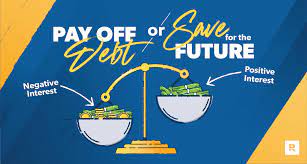Investing in dividend stocks is one of the most straightforward ways to earn passive income. But it’s important to understand the risks involved before jumping in.
Passive income streams are great for those who want to kick back and watch their money grow without much work. But they come with some serious risks.
1. High-Yield CDs or Savings Accounts
Savings accounts are a low-risk way to earn passive income by letting your money grow with the help of compounding interest. These accounts typically pay much higher rates than standard bank accounts, with some financial institutions offering up to 4.50% APY. However, it’s important to note that any savings account interest you receive will need to be reported on your taxes.
In addition to a low-risk investment option, high-yield savings accounts are often accessible via ATMs and come with no minimum balance requirements or monthly fees. They also offer the ability to track your savings progress with online tools and mobile apps.
When choosing a savings vehicle, it’s best to consider your personal needs and goals. For instance, if you’re looking to generate passive income in the short term, you might be better off with a CD than a high-yield savings account. This is because CDs have a specific time horizon, and pulling your money early could result in penalties.
2. Real Estate
Real estate has long been an important way to generate passive income. However, many of the traditional methods have been difficult to implement and aren’t as “passive” as they seem. Even hiring a property manager to handle maintenance and renter issues can be time and money consuming.
Recently, though, the doors have opened to a more passive form of real estate investing through REITs and crowdfunded deals. These are easier to manage, but still require due diligence to pick the right investment opportunity.
One company that has a proven track record of consistently raising its dividend is energy infrastructure REIT EQT (EQT). The stock’s high-yielding dividend has easily beaten inflation over the past 24 years, and it has a diversified portfolio of shale pipelines and ethylene crackers. This company is also an expert at reducing its cost of capital, which gives it a competitive advantage in the industry. As a result, its earnings per share have doubled over the past decade.
3. Stocks
A dividend stock strategy can be a solid way to generate passive income if you’re willing to invest for the long haul. However, it’s important to understand the risks involved when selecting stocks and how they fit into your overall financial plan.
Public stock is an investment that represents a fractional ownership of a corporation and can be traded on major exchanges like the New York Stock Exchange or Nasdaq. Companies that offer this type of stock open themselves up to more regulation and must disclose various aspects of their finances. The stock price fluctuates based on market demand and other factors.
There are two main ways to make money in the stock market: capital appreciation and dividends. When selecting stocks, consider companies that pay out regular cash dividends to shareholders. You can also choose a company that offers preferred shares, which give holders priority claim on any residual assets when the company dissolves. This type of stock resembles fixed-income bond investments and may perform more like bonds than common stock.
4. ETFs
Creating passive income streams isn’t just the purview of the wealthy. With a modest amount of startup time and capital, anyone can create an ongoing stream of passive income that supplements their regular paycheck.
ETFs (exchange-traded funds) combine the diversification and ease of investing in mutual funds with the ability to trade like stocks on national stock exchanges. They also offer lower fees and tax-efficiency than traditional mutual funds.
An ETF holds a basket of securities, such as stocks, bonds or commodities. When the value of those assets rises, ETF shares will rise as well. If the investments decline in value, ETF shares will fall. Some ETFs focus on a particular kind of investment, such as stocks that pay dividends, or specific kinds of countries. The wide holdings of an ETF provide significant diversification that reduces – but doesn’t eliminate – risk.


















Leave a Reply